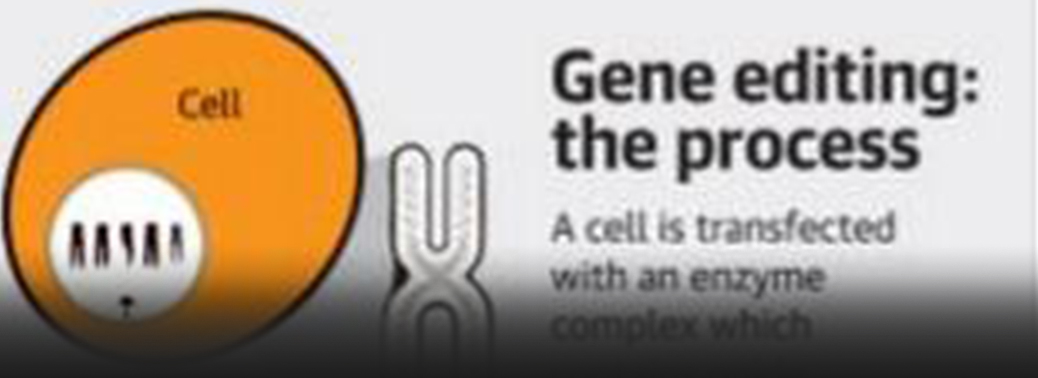CHINA LAYING DOWN GENE EDITING RULES
02, Jun 2019

Prelims level : Medicine
Mains level : Awareness in the fields of IT, Space, Computers, Robotics, Nano-technology, bio-technology and issues relating to intellectual property rights.
Why in News:
- In an attempt to make babies immune to infection by the human immunodeficiency virus (HIV) China, used a clinically untested gene editing tool
(CRISPR-Cas9) to modify a particular gene
Details:
- In 2012, scientists discovered that CRISPR is a key part
of the “immune system”. - When a virus enters bacteria, it fights back by cutting up the virus’s DNA. This kills the virus but bacteria store some of the DNA. The next time there is an invasion, bacteria produce an enzyme called Cas9 which matches the stored fingerprints with that of the invaders. If it matches, Cas9 can snip the invading DNA.
- The CRISPR-Cas9 gene editing tool thus has two components
- • A short RNA sequence that can bind to a specific target of the DNA and
- • The Cas9 enzyme which acts like a molecular scissor to cut the DNA.
- Once the DNA is cut, the natural DNA repair mechanism is utilised to add or remove genetic material or make changes to the DNA.
- CCR5 gene also helps to protect the lungs, the liver and the brain during certain serious infections and chronic diseases. The gene is known to prompt the immune system to fight the influenza virus in the lungs.
- China posted the draft regulation requiring researchers to obtain prior approval from the government before undertaking clinical trials. Those found violating the rules will be punished and this includes a lifetime ban on research. China is now all set to introduce gene-editing regulation.
CRISPR-Cas9:
- CRISPR is a dynamic, versatile tool that allows us to target nearly any genomic location and potentially repair broken genes. It can remove, add or alter specific DNA sequences in the genome of higher organisms.
- CRISPR (Clustered Regularly Interspaced Short Palindromic Repeats)are sections of DNA and are sections of genetic code containing short repetitions of base sequences followed by spacer DNA segments.
- CAS-9 (CRISPR-associated protein 9) is an enzyme. It uses a synthetic guide RNA to introduce a double strand break at a specific location within a strand of DNA.
- It is a system used by bacterial cells to recognize and destroy viral DNA as a form of adaptive immunity.
- CRISPR scans the genome looking for the right location and then uses the Cas9 protein as molecular scissors to snip through the DNA.
- Cas9 endonuclease – guide RNAs to direct it to a particular sequence to be edited. The genetic sequence of the RNA matches the target sequence of the DNA that has to be edited.
- When Cas9 cuts the target sequence, the cell repairs the damage by replacing the original sequence with an altered version.
- Unlike other gene-editing methods, it is cheap, quick, easy, safer and more accurate to use because it relies on RNA–DNA base pairing, rather than the engineering of proteins that bind particular DNA sequences.






